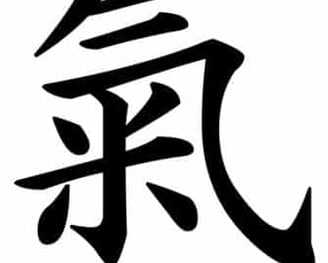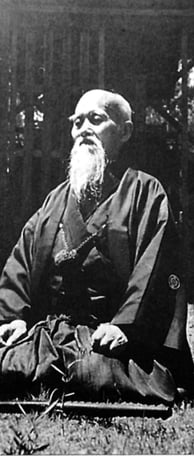About Aikido
Aikido is a purely defensive Japanese martial art. One does not attack or counter attack; one blends with the attacker in order to make one fluid motion. This allows the defender firstly to control the attacker and secondly to apply an Aikido technique: either a projection (throw) or immobilisation (locking/pinning move).
As one studies Aikido, one understands that Aikido is not purely a form of self defence; it is about self discipline and self control.
Aikido is a true skill and takes a lifetime to master.
The translation of Aikido out of the Japanese is confusing. Ai-Ki-Do equates to Harmony-Spirit-Way or Path. A simple definition would be The Way of Spirit through Harmony.


What is Aikido?
Aikido and its Founder


There are hundreds of web pages describing Aikido available on the World Wide Web. Most are based on definitions given in hundreds of books on the subject. I do not intend to plagiarise any of this work or waste your valuable time. My definition of Aikido is as follows:
A defensive martial art where the energy of the attacker is controlled thus making the attacker inoffensive. This means that an attack may be overcome before it even starts. It also means that the correct level of force can be employed to render the attacker(s) harmless.
O-Sensei ("Great Teacher") Morihei Ueshiba founded the martial art known today as Aikido. Born in 1883 in Wakayama Prefecture Japan, he sought out and studied under masters in many traditional martial arts, eventually becoming expert at a number of styles of jujitsu (unarmed combat), kenjitsu (sword fighting), and sofitsu (spear fighting). Dissatisfied with mere strength and technical mastery, he also immersed himself in religious and philosophical studies. His legacy of non-violence is key to the philosophy of Aikido.
O-Sensei later wrote: "Budo (the Martial Way) is not felling the opponent by our force, nor is it a tool to lead the world into destruction with arms. True Budo is to accept the spirit of the universe, keep the peace of the world, correctly produce, protect, and cultivate all things in nature".
O-Sensei continued to practice and teach Aikido into his old age. Observers marvelled at his martial abilities, vitality and good humour. He was still giving public demonstrations of Aikido at age 86, four months before his death.
Morihei Ueshiba passed away on April 26, 1969. Shortly thereafter, the Japanese government posthumously declared Morihei Ueshiba a Sacred National Treasure of Japan. His son Kisshomaru Ueshiba, succeeded him as the head of Aikido. Kisshomaru Ueshiba died on 4 January 1999, and was succeeded on the 18 January 1999 by Moriteru Ueshiba, the grandson of O-Sensei, as the third Doshu (Head of Aikido).
The Aikido Fellowship Yudanshakai
The Term "Yudanshakai" has various meanings in Japanese. Literally, it means "holder of a first degree black belt or above".
Within the Aikido Fellowship, we use the term to identify the senior Dan grades (5th Dan and above) who help shape the policy and direction of the Aikido Fellowship.
Led by Dominic Foster, Sensei, the Yudanshakai work as a team to teach and progress Aikido as taught to us by Shihan Ralph Reynolds.
